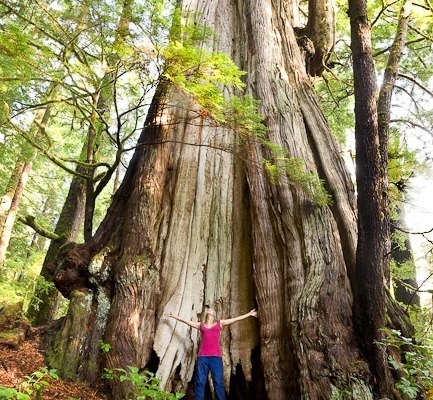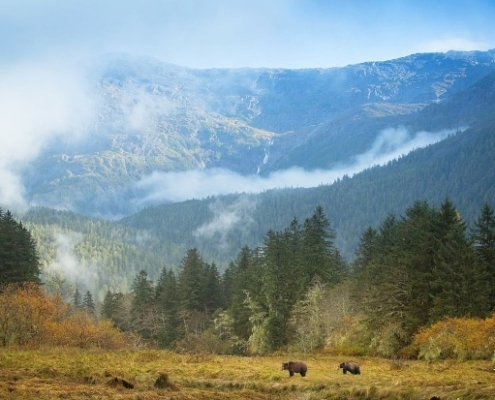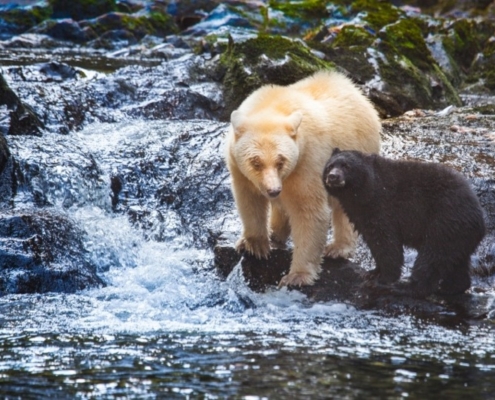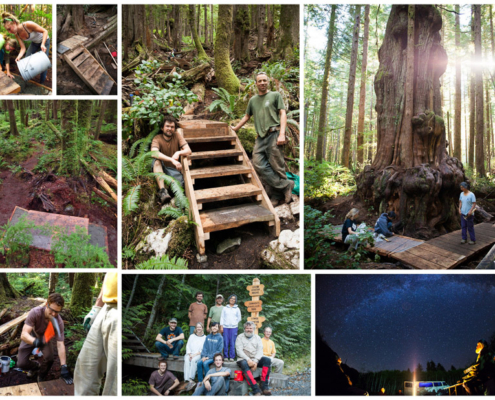
The Style of Support
Inspire Hair Design will be donating $1 from every hair service rendered this November to our campaign to protect BC's endangered old-growth ecosystems! Thanks to Inspire Hair Design for being inspired to help the forests! https://inspirehairdesign.ca/

THANK YOU to LUSH, MEC, Patagonia, and the Evergreen Foundation
The Ancient Forest Alliance is most grateful for the major support of ethical companies and foundations in helping our organization continue our work to protect BC's endangered old-growth forests and to ensure a sustainable, second-growth forest industry. We are giving great THANKS to LUSH, MEC, Patagonia, and the Evergreen Foundation for their support!

VIDEO: Reexamining the Forest
This great video by Wyatt Visuals, featuring researcher Ira Sutherland and Tla-o-qui-aht canoe carver Joe Martin, describes their work to measure the ecosystem services of Vancouver Island's old-growth forests, including for First Nations cultural uses, in Nuu-chah-nulth territory in 2014.
We’ve crossed 30,000 petition signatures! THANK YOU! Let’s keep going!

OPINION: It’s time to fully deliver Great Bear Rainforest agreements
"Today, after years of technical work, negotiations and planning, all parties involved have a clear understanding of what the solutions package will include: improve decision-making between Province and First Nations; new human well-being commitments for First Nations; increase the amount of rainforest off-limits to logging to 70 per cent of the natural old-growth and an ecologically-sound forest management framework. All that is missing at this point is for the B.C. government to heed the call from First Nations, forestry companies, environmental organizations and a majority of British Columbians (68 per cent, according to a 2013 poll) and focus leadership and resources to finish the task in the coming weeks."

Nineteen year battle over Great Bear Rainforest on brink of peace as momentous deadline approaches
After decades of conflict and tense meetings where nerves frayed, news of whether environmental groups, First Nations, the logging industry and government have finally settled the fate of the Great Bear Rainforest may break as soon as Monday.

Avatar Grove Boardwalk: Preliminary Phase Complete – THANK YOU SO MUCH!
THANKS to your support, we've raised over $12,000 in 2014 so far and have now completed the basic, preliminary phase of the boardwalk, including including vital bridges, steps, tree-viewing platforms, and walkways over several sensitive, steep, slippery and wet sections. This is an incredible improvement from before and one that has been enjoyed by thousands of people already from all across the world. If you've yet to visit the grove since the work began, now's a great time to do so! Funding Still Needed for 2015 Upgrades..

2014 Avatar Grove Boardwalk Progress and Photo Galleries
The Ancient Forest Alliance has nearly completed the preliminary phase of boardwalk construction at the Avatar Grove in essential areas such as the steep and slippery slopes, the roots around the biggest trees, and over creeks and other obstacles. More upgrades can still be done in the future but the toughest parts are almost compete. A big thanks goes out to our volunteers and donors! Fundraising for the boardwalk project will continue as we still have more work to complete in the new year.
